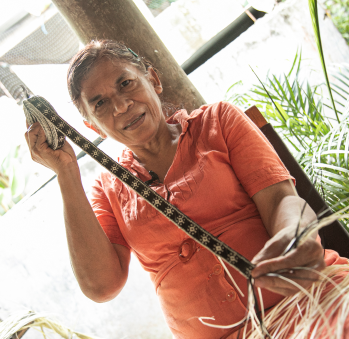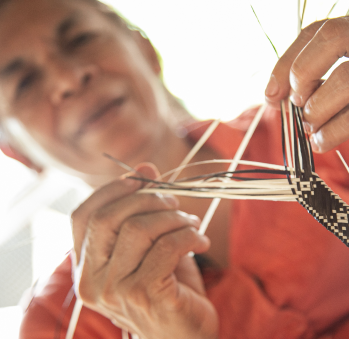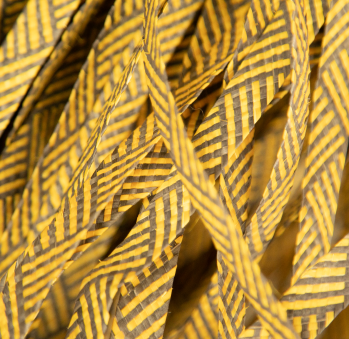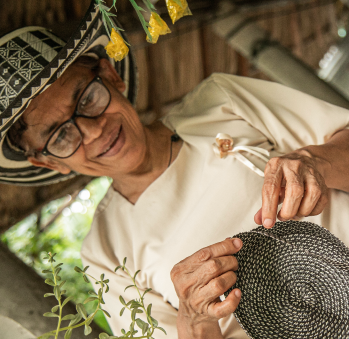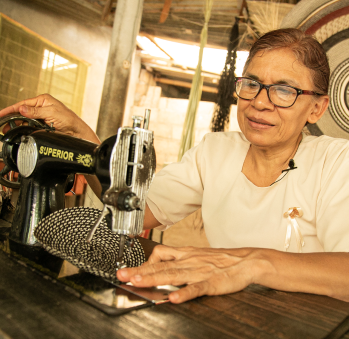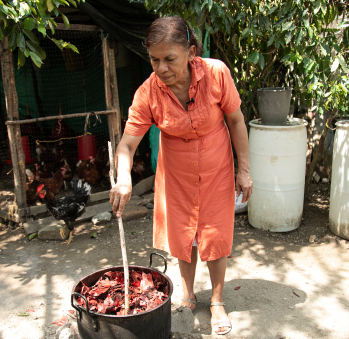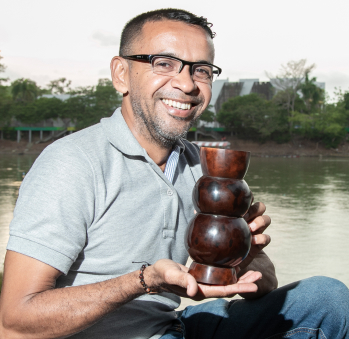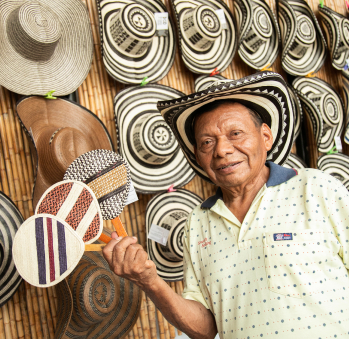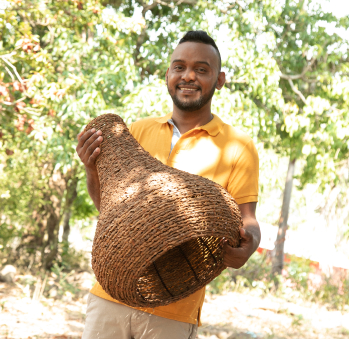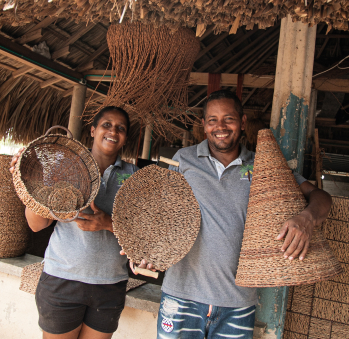Luisa Isabel Florez
Luisa was raised by her grandmother, Aurelia Mendoza, as she lost her mother when she was just 13 months old. It was by her side that she learned everything she knows about caña flecha weaving. Luisa fondly remembers how, at the age of eight, she began braiding, gathering, and intertwining plantain or corn leaves, as every child in her town did—and still does. She explains that in Tuchin, her hometown, every woman engages in weaving, even while nursing, and she can proudly state that she has been practicing this craft for over 40 years. Her sombreros vueltiaos have gained widespread recognition, and she takes joy in the fact that her entire family is involved in their production.
She talks about the process of learning to weave sombreros as stages, akin to the levels of any school. It starts with someone guiding us and ends when we pass on that knowledge to another person. Achieving and mastering a level enables progression to the next one, much like advancing to the next grade in school. She finds pleasure in teaching and elaborates on the distinct characteristics of the craft that have given her town its purpose.
It all begins with the caña flecha, the raw material that must undergo proper treatment and preparation before being woven into the braid used for crafting each hat. She takes her time describing the fiber: its green hue when freshly harvested, the use of the leaf’s central nerve, the necessity of soaking it overnight in water mixed with chopped and ground caña agria to bleach it, and the four-day sun-drying process. She warns that if the fiber bears small stains or black dots, it doesn’t mean it’s spoiled; rather, it’s the natural result of its formation. In any case, these fibers, referred to as “”palma vieja”” or old palm, are dyed and employed for weaving the darker portions of the hats. Moving forward, she delves into the world of natural dyeing: the fiber is immersed in a specialized mud well, free of sand and roots, and then colored using bija. Now, they are ready to begin weaving.
The width of the braids varies based on the desired refinement of the hat. It ranges from 11 to 33 threads of caña flecha. The most common hat is woven with braids of 11 threads, while the most elaborate ones require 33 threads. Traditional hats often utilize braids of 15 threads, known as the “”quinceano,”” along with 19, 21, or 23 thread braids. Hats with finer braids are usually customized, and there’s even a hybrid style called the “”machihembriado,”” featuring braids of 15 and 19 threads. All of these factors influence the lead times, which can span from three days to one week.
Children initially start by crafting the ribbon that finishes the hat. Then, with greater knowledge of the craft, they proceed to shape the hat and weave the brim. Those with the highest expertise take charge of weaving the pintas or traditional patterns on the hat’s top. These visible designs bear the symbols of the ancient zenú families, who etched their family names using nature-inspired shapes such as fish bones, passionfruit flowers, or turtle shells.
In the present, Luisa takes pride in passing on her love for this craft to her children, particularly Ander, who became her devoted apprentice. He evolved into a skilled craftsman and tradesman, enabling them to fulfill the significant orders they receive for various caña flecha products. They have successfully collaborated with other workshops to manage such production, serving as an example of how an artisanal community can establish a productive chain. This has benefited all of them, enhancing their quality of life. Moreover, they are securing the transmission of their knowledge to the new generations of artisans who perceive a promising future in the work of their elders.
Craft
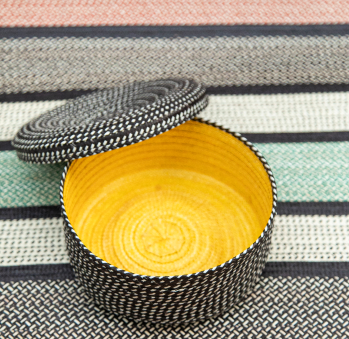
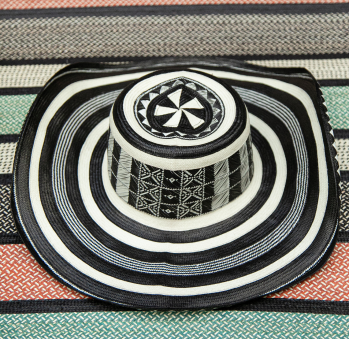
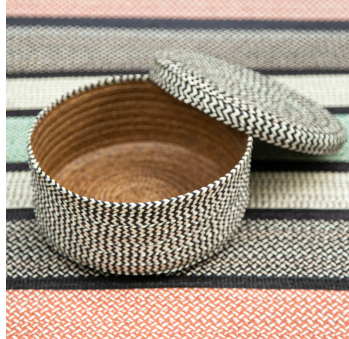
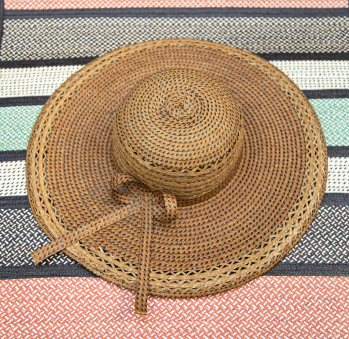
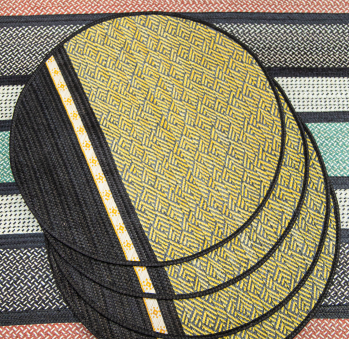







Artisans along the way
Artisans along the way
No puede copiar contenido de esta página









































